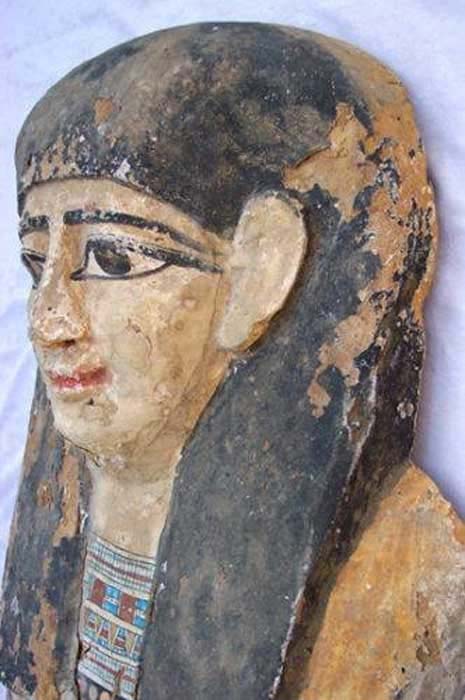
Chopped Up Egyptian Mummy Body Parts Found Stuffed in a Speaker En Route to Belgium
Egypt’s Ministry of Antiquities has announced that they have stopped the attempted smuggling of mummified body parts from a Belgium-bound passenger.
The unnamed passenger boldly stuffed parts from six mummies, including “two feet, two legs, the lower part of a left hand, one arm, and a part of the torso into a speaker,” according to an article in IFLScience. The loaded speaker was then “packed into their luggage” said Hamdi Hamam, head of the Central Administration of Archaeological Units at Egyptian Ports.
Authorities rumbled the heist after X-ray scans of the luggage at Cairo International Airport revealed what appeared to be “the uncanny resemblance of hidden human body parts.” Dr Rania Ahmed, who specializes in the dating, treatment and conservation of mummies, examined the find and confirmed its authenticity with the smoking gun being “Evidence of embalming fluid and resin” found on the limbs.
- Stolen 1200-Year-Old Bible with Gold-Encrusted Motifs Recovered in Anti-Smuggling Raid in Turkey
- K-9 Artifact Finders Plan to Sniff Out Smuggled Antiquities
- Operation Zeus Stops Smuggling Ring from Stealing Over 26,000 Artifacts from Turkey

The person tried to smuggle mummy parts in a speaker. (Ministry of Antiquities)
All antiquities in Egypt are deemed to be property of the state, which prohibits the possession or trade of such items. The fragmented mummy parts were confiscated under Egyptian Law on the Protection of Antiquities, which lays out that “every person who unlawfully smuggles an antiquity… shall be liable to a prison term with hard labor and a fine of not less than 5,000 and not more than $50,000 [Egyptian] pounds.”
Where Did the Ancient Mummies Come From?
In this instance, while the mummy remains were returned to Egyptian Museum authorities for restoration, it is currently unclear where the smuggler sourced the mummy parts.

It is currently unclear where the smuggler sourced the mummy parts that were confiscated. (Ministry of Antiquities)
Royal, noble, and elite members of ancient Egyptian society were buried with gold, silver, precious stones, artwork, and weaponry and to accompany them one their voyage into the afterlife. And a Live Science article presents some pretty alarming data reflecting on the looting of ancient Egyptian tombs:
“Examination of satellite imagery of more than 1,000 sites across Egypt dating from 2002 to 2013 showed that looting affected many locations. Researchers found that incidents of looting doubled between 2009 and 2010, the years leading up to the 2011 unrest, and then doubled yet again between 2011 and 2013.”
What is more, a 2016 report in the journal Antiquity said “In 2016, objects worth an estimated $50 million were illegally shipped from Egypt to the U.S. This represents the highest annual value of trafficked Egyptian artifacts in 20 years.”
These spiritually charged objects, once robbed, demand big prices on black markets across the world and even some of the most notable ancient Egyptian artifacts exhibited in museums across the globe got there through ‘under the table’ methods.
Legal Controversies Over Stolen Artifacts
In my home country, for example, The Museum of Scotland is currently embroiled in an argument with Egyptian authorities about a block of limestone from the Great Pyramid of Giza known as a ‘casing stone’. The museum is insisting that a British engineer was given permission to take the stone in 1872 but Egypt's Antiquities Repatriation Department has cast doubt over its authenticity and the validity of the documentation.

The Great Pyramid casing stone. (National Museums Scotland)
In a recent BBC article, Shabaan Abdel Gawwad, supervisor-general of Egypt's Antiquities Repatriation Department, said he wanted “an official team to visit Scotland to see the certificate of possession and export documents.”
- Illegal Artifact Smuggling and Forgery Ring Smashed in Europe-Wide Police Swoop
- Operation Mummy's Curse Repatriates 2,800-Year-Old Mummified Hand That Had Been Used as Hollywood Prop
- Looted Iraqi Antiquities Can Finally Return Home After Simple Identification by British Museum
The IFLScience article also tells of a pair of “3,200-year-old art tableaus currently housed at the Louvre” being at the center of another contentious debate. The Egyptian government claims they were “stolen from a tomb in the Valley of the Kings more than three decades ago.”
Possibly the most controversial stolen artifact situation is The Egyptian Supreme Council of Antiquities’ claim that the famous bust of Nefertiti on display in Berlin’s Egyptian Museum since 1923, “was sold to the museum under false pretenses and rightfully belongs in its home country.”
It would appear that in the 19th century many archaeologists applied the old “finders keepers, losers weepers” attitude. But now, when traceability and accountability are at the fore, the “losers” are coming for what is rightfully theirs.

An illegally excavated object someone tried to sell on eBay. ( Egypt’s Heritage Task Force )
Top Image: The smuggled mummy parts were found stuffed in a speaker. Source: Ministry of Antiquities
By Ashley Cowie
















Comments
But many if not most of the items - define legally? When the Ottoman Empire owned Egypt, many items were dug up and sold off by farmers and there were no laws about it making it illegal. Are those items illegal? They weren't then ... and how about the stuff from more recent turn of the 1900s digs, are those npw illegal? Enquiring minds want to know ... Heck, I had before my house burnt a segment of a scroll that had been gotten by my great grandfather in a trip in 1894, no law against him buying it in a souk then, was I in possession of an illegal artifact [mentioned and carried on insurance policies since 1951 on my dad's fine art policy, he got it from his grandfather via inheritance, mentioned in the will specifically] that has a firm provenance for at least 90 odd years.
Where does it stop, emptying out museums of stuff that they have possessed for over a hundred years so you don't hurt anybodies feelings?
I am a firm believer that such items obtained illegally should be returned to their respective countries, AS WELL AS security measures should be taken to prevent any further thefts.
There are too many Egyptian pieces in museums all over the world, like the British Museum and the Vatican, to mention just two. I am not Egyptian, nor have any friends or family members related to Egypt.
Idiocy - you are *not* going to have any official documentation from 1872 ... other than perhaps mentions in diaries. Then we run into the issue of the current government of Egypt was NOT the correct government of Egypt in 1872 ... if the Pasha said the engineer could have it, then it was a done deal.
My same argument over the purported claim against the Elgin Marbles ... the official government of what is now Greece authorized the sale and export, so they marbles and anything else sold off under previous governments are valid sales and there is no grounds for any sort of repatriation. Sucks, but there you have it.
I would rather the efforts go into preventing the CURRENT thefts and destructions of antiquities instead of this 'old news' crap.